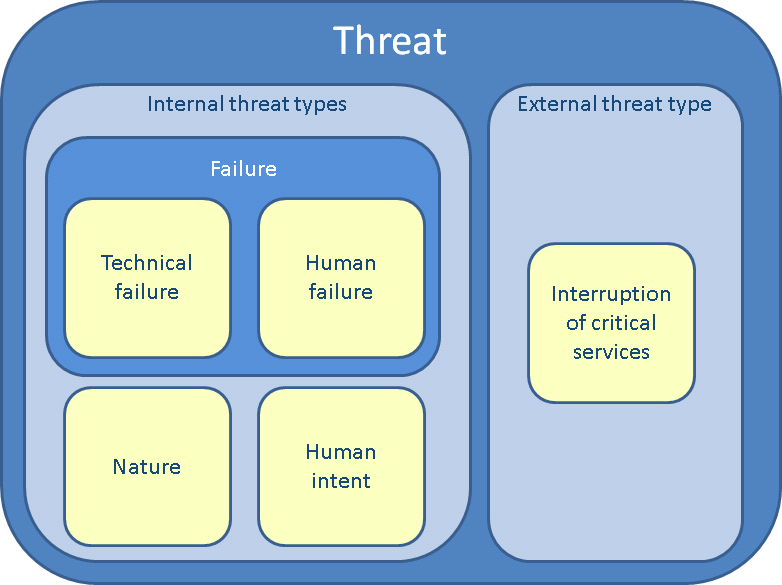Difference between revisions of "Safety threats"
| Line 2: | Line 2: | ||
==Definition== |
==Definition== |
||
| − | A threat is a source of potential harm ("''An indication of possible violence, harm, or danger.''" DHS 2004: 73)<ref>DHS (2004): National Response Plan. Department of Homeland Security: Washington. Online: http://www.scd.hawaii.gov/documents/nrp.pdf [2011-03-23].</ref>. It can both originate in wilful act (such as the threat of violence or [[Urban terrorism|terrorism]]), as in non-intentional circumstances (such as the threat of [[Natural threat|natural hazards]], e.g. floodings, volcanic eruptions etc., or man-made hazards, e.g. industrial or technical accidents, human failure). |
+ | A threat is a source of potential harm ("''An indication of possible violence, harm, or danger.''" DHS 2004: 73)<ref>DHS (2004): National Response Plan. Department of Homeland Security: Washington. Online: http://www.scd.hawaii.gov/documents/nrp.pdf [2011-03-23].</ref>. It can both originate in wilful act (such as the threat of violence or [[Urban terrorism|terrorism]]), as in non-intentional circumstances (such as the threat of [[Natural threat|natural hazards]], e.g. floodings, volcanic eruptions etc., or man-made hazards, e.g. industrial or technical accidents, [[human failure]]). |
Revision as of 15:39, 23 July 2012
Contents
Threat
Definition
A threat is a source of potential harm ("An indication of possible violence, harm, or danger." DHS 2004: 73)[1]. It can both originate in wilful act (such as the threat of violence or terrorism), as in non-intentional circumstances (such as the threat of natural hazards, e.g. floodings, volcanic eruptions etc., or man-made hazards, e.g. industrial or technical accidents, human failure).
Types of threat for functional objects
When we look at the concept of threat from the perspective of its functional use (which we can also do for urban objects), a threat can be defined as any circumstance that threatens the continuity or quality of those functions (which include, amongst others, protection of life and economic use).
Threats can in this perspective be classified by their origin. This classification is layered: the first layer discriminates between internal threats that have impact on the internal processes (such as a car hitting a building and causing diminished structural safety for the inhabitants) and external threats that only have impact on external requirements for those processes (such as a discontinuation of electricity supply to a building). Both types of threats will result in diminished continuity or quality of functions provided by the building (reduced safety in the first example, reduced comfort in the second example).
Within internal threats we can distinguish threats that originate from natural processes, threats that originate from failures, and threats that originate in wilful acts. Within threats that originate from failure, we can again distinguish between failures of designs (technical failure) and failures of human action (human failure). This structure is graphically depicted in the (clickable) figure below.
Footnotes and references
- ↑ DHS (2004): National Response Plan. Department of Homeland Security: Washington. Online: http://www.scd.hawaii.gov/documents/nrp.pdf [2011-03-23].
MAP
<websiteFrame> website=http://securipedia.eu/cool/index.php?wiki=securipedia.eu&concept=Threat height=1023 width=100% border=0 scroll=auto align=middle </websiteFrame>
<headertabs/>

